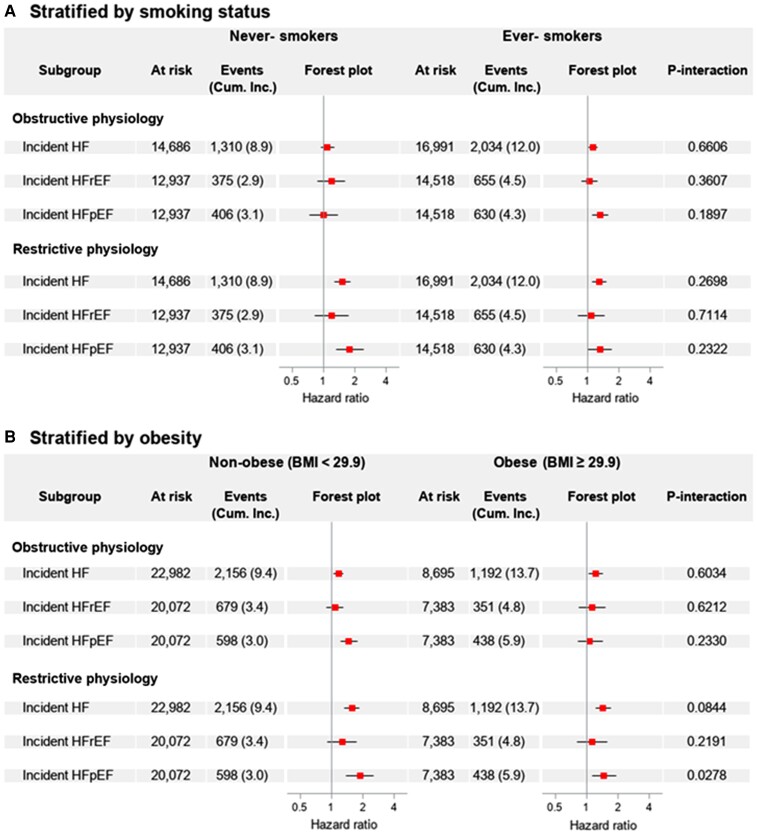Figure 2.
Smoking- and obesity-stratified analyses of associations between lung function impairment and incident heart failure. To assess potential effect modification, Fine–Gray proportional sub-distribution hazards models were stratified by smoking status (A) and body mass index (B). Models were adjusted for baseline age, sex, race, educational attainment, birth year, site, height, weight, smoking status, pack-years, systolic and diastolic blood pressure, total cholesterol, hypertension status, diabetes status, and statin use. Among never-smokers, restrictive physiology was significantly associated with overall incident heart failure and incident heart failure with preserved ejection fraction, but not with incident heart failure with reduced ejection fraction. Similarly, analyses stratified by body mass index showed restrictive physiology remained strongly associated with incident heart failure preserved ejection fraction in non-obese participants. Hazard ratios are plotted on a log scale.

